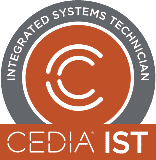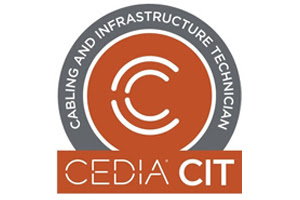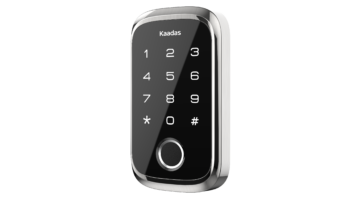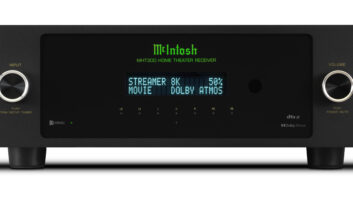
The CEDIA Integrated Systems Technician (IST) certification has recently achieved accreditation to the global ISO standard. The lengthy process began as a grassroots effort. Integrators who are on the jobsite every day and wanted to create something we can all be proud of stepped up and offered their expertise to build a certification every technician should have.
A Career Journey
The IST certification represents the core skills all technicians in our industry need. These skills are essentials, not luxuries, so having the certification is a way to distinguish yourself as a credible professional.

This certification is designed to be a natural part of your journey in the smart home industry. The Cabling and Infrastructure Technician (CIT) certification is the first rung on the ladder to leveling up your career. It teaches the fundamentals of the industry and gives you a solid working foundation for your career.
In order to be eligible for the IST certification, you must first pass the CIT exam. The IST certification is the next level of learning demonstrating your ability to work independently on a jobsite. While the program is robust, it is attainable. It’s not an overnight process, though, and will take effort and dedication to obtain and maintain your credentials in the long run.
Elevating the Industry
As the individual doing the learning, when you pass the exam, the certification is yours. It can travel with you between employers and in your own business, which is great for those who are working hard to establish themselves in their careers.
But it’s not just about you as an individual.
Also by David Whitney: What Accreditation Means for CIT and the Industry
Having globally recognized professional certification programs legitimizes our industry and elevates the level of work technicians do and foresee in the future. As insiders, we see excellence in integrator projects all the time, but having a third-party step in and say that CEDIA certification meets international standards (ISO) is a big deal.
Other trades, such as electricians, designers, and architects, haven’t always recognized integration as a standalone trade. Through certification, we’re working to change that, and your choice in professional certification can make all the difference.
CEDIA has worked and will continue to work with the home technology industry to build our reputation. When you become CIT and IST certified, it helps you and your fellow integrators. Having a workforce that’s certified to high standards benefits everyone, including you and your business — whether you work for someone, have your own business, or are thinking about striking out on your own. Credentials are a way to set yourself apart and continually hold yourself to high standards as you grow.
Manufacturers also support the certification effort. Knowing the workforce has a solid understanding of foundational concepts makes manufacturer training more effective across the board. In other words, they can focus on more advanced, product-based specifics when you attend their training if you’re already certified in the industry.
How to Take the Next Steps
So, if you’re thinking about CIT and IST certification, here’s what to do next:
- Review the exam blueprints to assess your familiarity with the content. Specific education isn’t required to sit for any exam, but resources exist for candidates who want to supplement their knowledge learned from on-the-job experience.
- Consider attending industry events where training is offered. For example, at CEDIA Expo there are review sessions for both CIT and IST, and you and/or your employees can sit for either exam while you’re onsite.
- Consider purchasing relevant textbooks and resource documents. While the exams are practical in nature, they’re built on a foundation of knowledge covered in resources such as the CIT and IST textbooks and related ANSI/TIA standards. In addition to refreshing your knowledge before an exam, these are helpful resource materials for your company to own.
- Consider a focused training program or review course. CEDIA offers online and in-person options of various lengths. Distributors and other companies may also offer programs that cover the scope of knowledge on the certification exams.
- Earn the CIT or IST certification any time throughout the year. CEDIA Expo is a convenient option if you’re planning to attend the show, however, it’s not the only time you can get certified. You also can take the exam at a test center near you or through remote proctoring. There are many options that make these certifications doable and even convenient, no matter what your workday may look like.
If you are established in the industry, certification can also be helpful to your business. It will help you stand out and show that even though you know what you’re doing, you stay up to date on the newest protocols and best practices. It adds even more of the trust factor you’ve been building with clients and customers throughout your career.
In fact, if you’re a current ESC-T holder, you can transition your certification to the IST by completing the required CEUs and renewal application form. The IST is a newer and more updated version of the ESC-T certification that retains the same target level of knowledge and general scope. You can learn more about the IST and the processes for transitioning your certification at https://cedia.net/certification/ist.
CEDIA certification is driven by the desire to elevate the industry. The dedicated volunteers and subject matter experts are invaluable to developing the program, which will soon become the standard for everyone in smart home technology. It’s truly a qualification by the integrator for the integrator, which means that when you participate, everyone around you is positively impacted. You have the power to help shape the industry — what will you choose to do?






